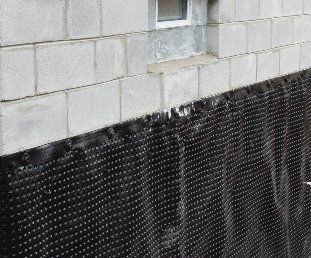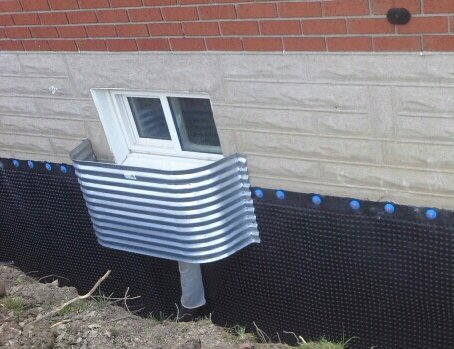SUMP PUMPS
WE'LL BEAT ANY WRITTEN QUOTE! FULLY INSURED! FULLY LICENSED!
Today’s complex waterproofing systems often include sump pumps. At Dan Parr’s Excavating & Waterproofing, we install sump pumps of any size, from the standard model to pumps capable of pumping large volume great distances.
Sump pumps are ideal for anyone who lives in an area prone to flooding. Protect your residential or commercial property by investing in the right type of sump pump. These appliances are designed to remove flood water from the area directly below and immediately around your foundation. They protect your home on a long-term basis and help you avoid the structural damage and mold problems associated with flooding. Here at Dan Parr’s Sewer, Waterproofing & Excavating, our technicians will help keep your home water-free.
We are proud to carry the most reliable, low-maintenance sump pumps available. Plus, our technicians are also trained to replace sump pumps and most installations can be done at the same time as the tank cleaning. To learn more about how we can assist you with your sump pump needs, contact us today!

How to Tell If Your Sump Pump Is Full
A sump pump is an essential component of your home’s drainage system, safeguarding your basement or crawl space from flooding. However, when your sump pump is full or malfunctioning, it can fail to protect your home effectively, leading to costly damage. Recognizing the signs of a full sump pump early
can save you a lot of trouble down the road. Here's how you can detect the issue and what to do about it.
Recognizing the Signs of a Full Sump Pump
Sump pumps work silently most of the time, so it’s easy to overlook the early warning signs of a problem.
Here are the key indicators that your sump pump might be full:
- Unusual Noises: Sump pumps usually operate with a low, steady hum when they're functioning correctly. If you notice loud grinding, clanging, or rattling noises, it could indicate that the pump is overworked due to a whole basin. These sounds might also suggest mechanical wear, such as a damaged impeller or a clogged pipe.
- Frequent Cycling: Is your sump pump turning on and off more often than usual? This is a common indication that the pump basin is full, causing the system to operate at an increased rate to maintain the water levels. Frequent cycling could also indicate issues with the float switch—a mechanism that triggers the pump when the water reaches a specific level.
- Water Pooling Around the Pump: Water around the sump pump instead of inside the sump pit is a major red flag. This often indicates that the pump is not draining water as it should, either because the pump is overwhelmed or there's a blockage in the drainage line.
- Musty Odours: A full sump pump can lead to standing water in and around the pit. Over time, this stagnant water may cause unpleasant odours, often indicative of mould or mildew growth.
- Rising Humidity Levels: If your basement feels damp or humid, your sump pump might be struggling to keep up with water accumulation. Check the pit to see if water levels are unusually high.
Why It's Important to Act Quickly
Ignoring these warning signs can lead to serious consequences, including:
Flooding
A full sump pump cannot manage excess water, which can quickly flood your basement.
Electrical Damage
Water intrusion near your sump pump can compromise electrical
components.
Structural Issues
Persistent water damage can weaken your home's foundation over time.
Mould Growth
Lingering moisture creates the perfect environment for mould and mildew, which can affect both your property and your health.
How to Prevent a Full Sump Pump
Regular maintenance is the key to avoiding sump pump overflows and failures. Here are some tips to ensure your pump operates efficiently:
- Schedule Regular Inspections: Inspect your sump pump and pit every three months. Look for debris accumulation, obstructions, or signs of wear.
- Test Its Functionality: Pour a bucket of water into the pit occasionally to verify that the pump starts automatically and drains the water promptly.
- Clean the Pump and Pit: Debris like dirt, rocks, and silt can block your pump. Cleaning the pit periodically helps prevent clogs. Ensure the pump is disconnected from power before cleaning.
- Check the Float Switch: Ensure the float switch moves freely, as a stuck switch can cause the pump to run continuously or not activate at all.
- Invest in a Backup System: Consider installing a battery or water-powered backup system. This ensures your sump pump will function even during power outages or heavy storms.
Don’t Wait Until It’s Too Late – Call Us Today!
If you’ve noticed any signs of a full sump pump, don’t delay. Ignoring the problem can lead to significant damage and costly repairs. Contact Dan Parr Septic Systems & Pumping today to schedule a professional inspection or service. Give your sump pump the care it deserves and protect your home
from water damage all year long.




